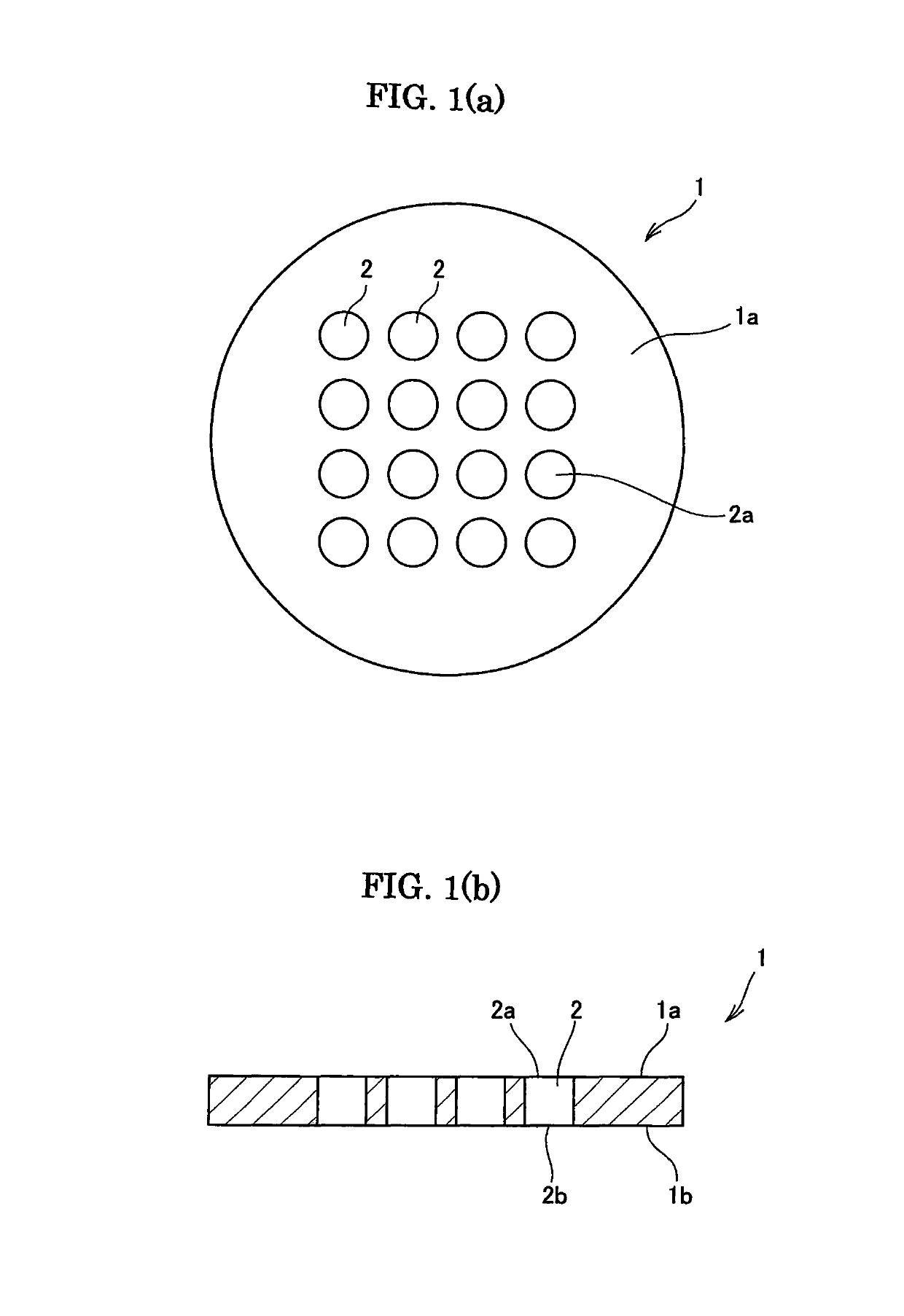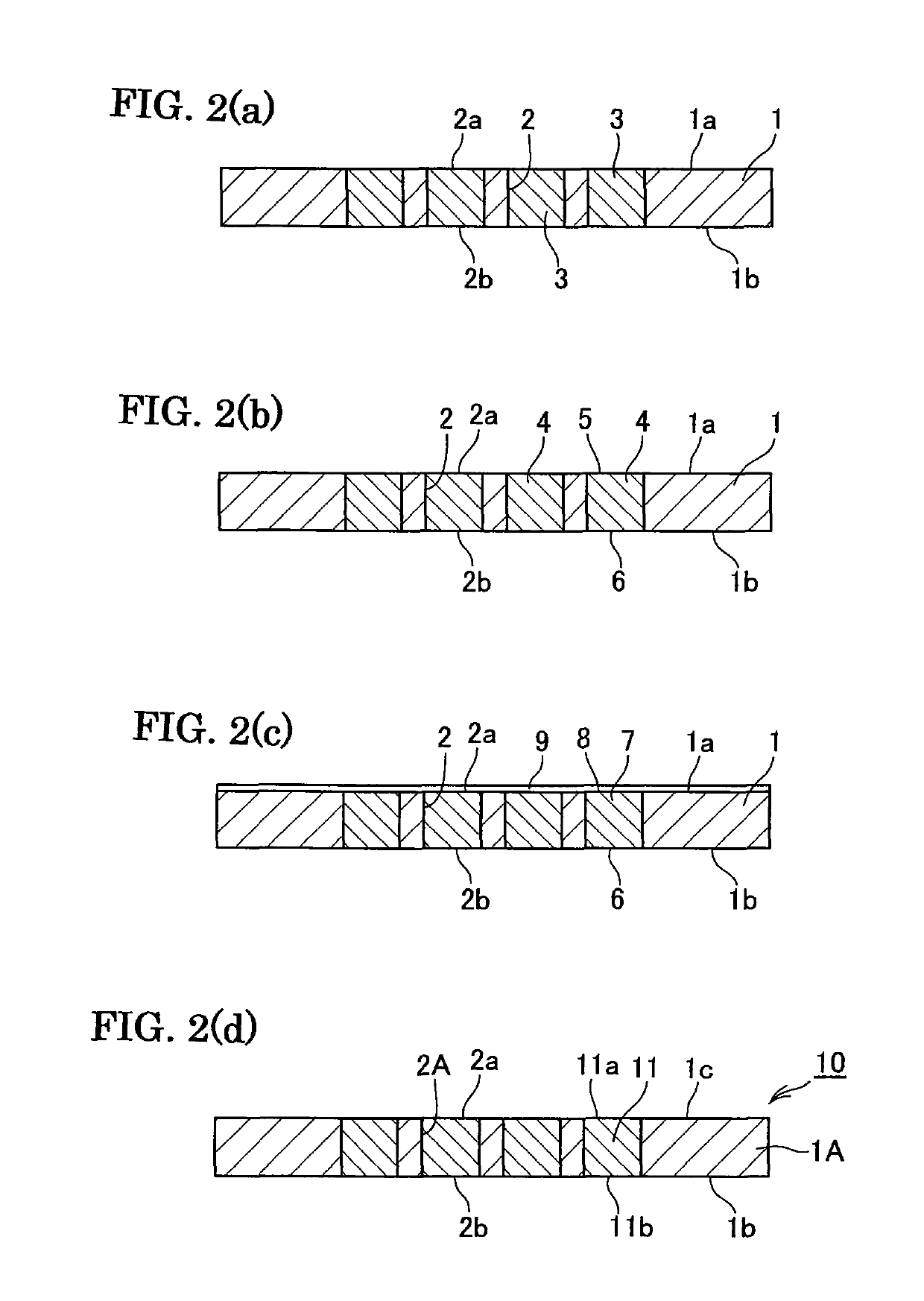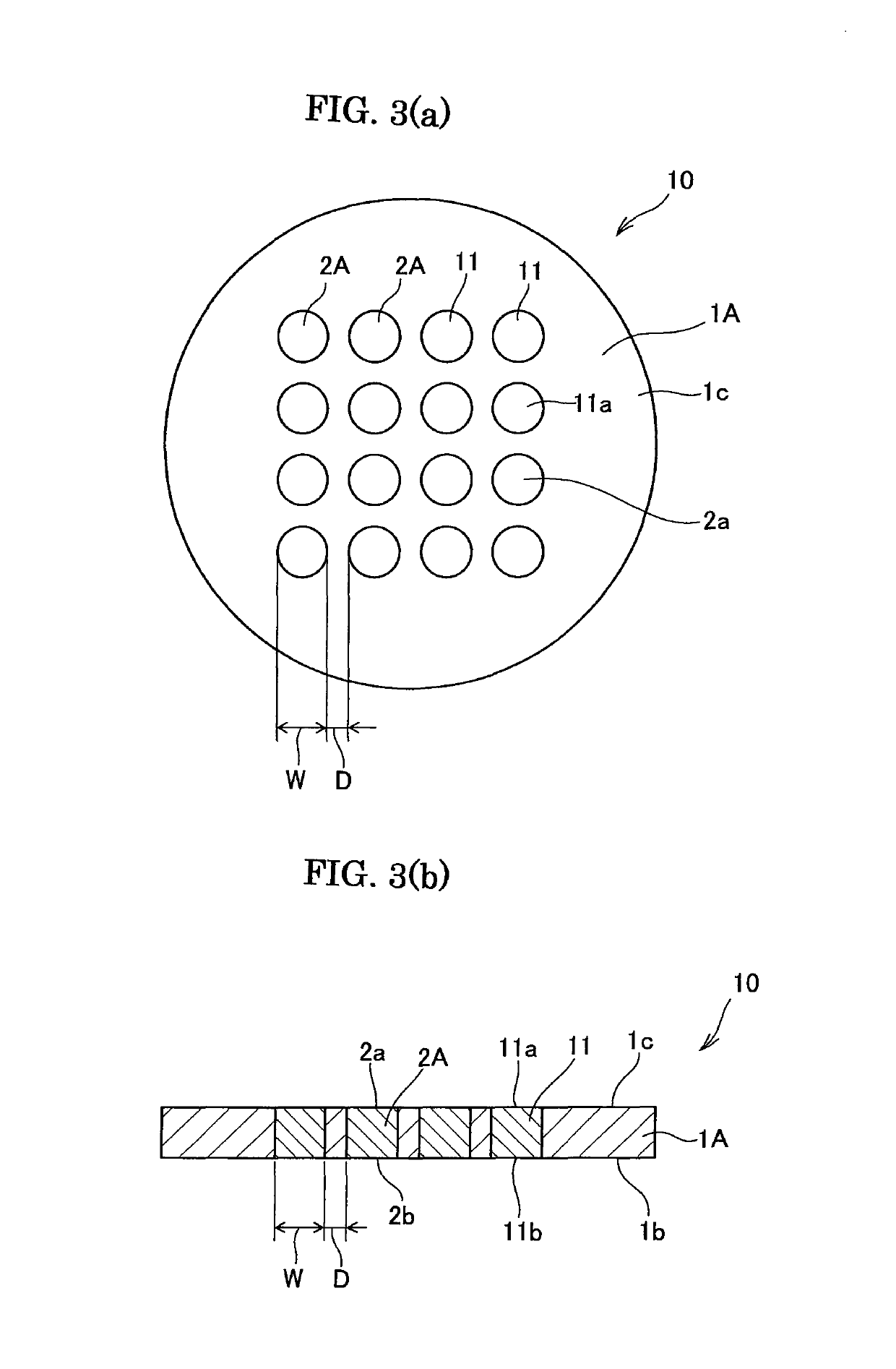Connection substrate
a technology of connecting substrate and active metal, which is applied in the direction of printed circuit stress/warp reduction, printed element electric connection formation, etc., can solve the problems of high viscosity of metal solder containing active metal, high viscosity of metal solder, and high viscosity of active metal solder, so as to reduce the number of pores, prevent the effect of separation and deterioration of the water tightness of the separated parts
- Summary
- Abstract
- Description
- Claims
- Application Information
AI Technical Summary
Benefits of technology
Problems solved by technology
Method used
Image
Examples
example 1
[0059]Connection substrates were produced as described referring to FIGS. 1 to 6.
[0060]Specifically, it was produced slurry by mixing the following components.
(Powdery Raw Material)
[0061]
(Powdery raw material)α-alumina powder having a specific surface area100weight partsof 3.5 to 4.5 m2 / g and an average primaryparticle size of 0.35 to 0.45 μm(alumina purity of 99.99 percent)MgO (magnesia)250ppmZrO2 (zirconia)400ppmY2O3 (yttria)15ppm(Dispersing medium)2-ethyl hexanol45weight parts(Binder)PVB (polyvinyl butyral) resin4weight parts(Dispersing agent)High molecular surfactant3weight percent(Plasticizer)DOP0.1weight parts
[0062]The slurry was then shaped into a tape by doctor blade method to a thickness corresponding with the thickness after the sintering of 300 μm, and the tape was cut into square pieces each having sizes corresponding with a length of 100 mm and a width of 100 mm after the sintering. The thus obtained powder-shaped body was calcined (preliminary sintering) in atmosphere ...
examples 2 to 7
[0092]Connection substrates were produced as the Example 1.
[0093]However, the ratio of the area of the metal porous body and the ratio (total) of the areas of the glass phases in the cross section of the through conductor were changed as shown in table 1. For changing these parameters, it was changed the concentration of the solid content of Ag—Pd paste, ratios of Ag, Pd and glass frit, sintering temperature, and temperatures and holding times during the melting and impregnation of the glass paste.
[0094]Then, as to the thus obtained ceramic substrates, it was measured the number of the through conductors with the leakage of liquid observed and shown in table 1, in 30000 counts of the through conductors provided a single ceramic substrate.
[0095]
TABLE 1Com.Ex. 1Ex. 2Ex. 3Ex. 4Ex. 5Ex. 6Ex. 7Ex. 1Number of first spaces in first open pores000000 05opening at main surface 11a (counts)Number of second spaces in second open pores658569106opening at main surface 11b (counts)Ratio of area of...
PUM
| Property | Measurement | Unit |
|---|---|---|
| thickness | aaaaa | aaaaa |
| diameter | aaaaa | aaaaa |
| size | aaaaa | aaaaa |
Abstract
Description
Claims
Application Information
 Login to View More
Login to View More - R&D
- Intellectual Property
- Life Sciences
- Materials
- Tech Scout
- Unparalleled Data Quality
- Higher Quality Content
- 60% Fewer Hallucinations
Browse by: Latest US Patents, China's latest patents, Technical Efficacy Thesaurus, Application Domain, Technology Topic, Popular Technical Reports.
© 2025 PatSnap. All rights reserved.Legal|Privacy policy|Modern Slavery Act Transparency Statement|Sitemap|About US| Contact US: help@patsnap.com



